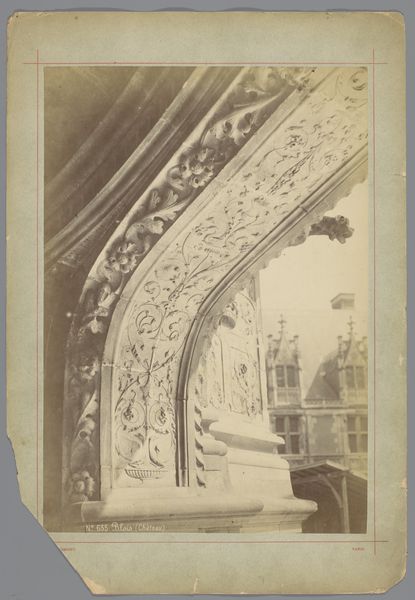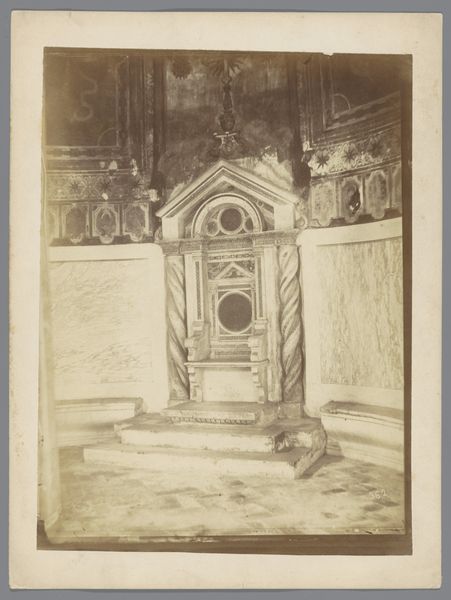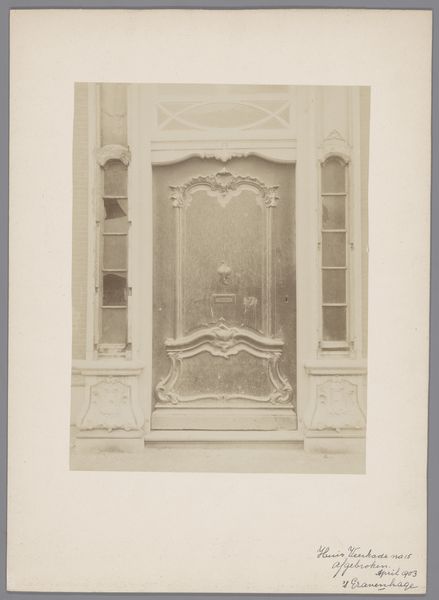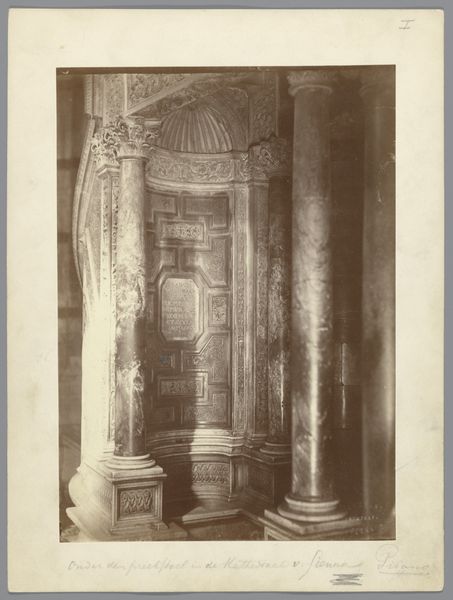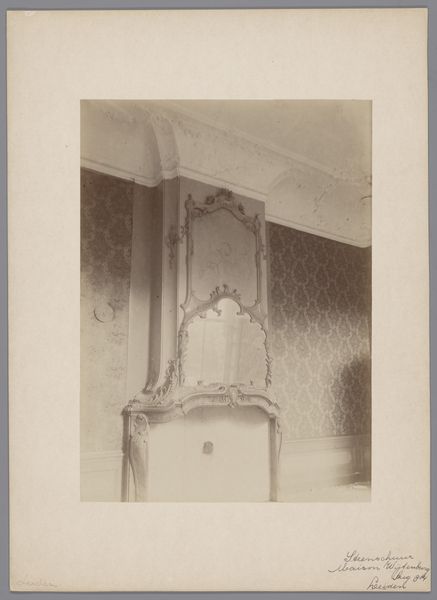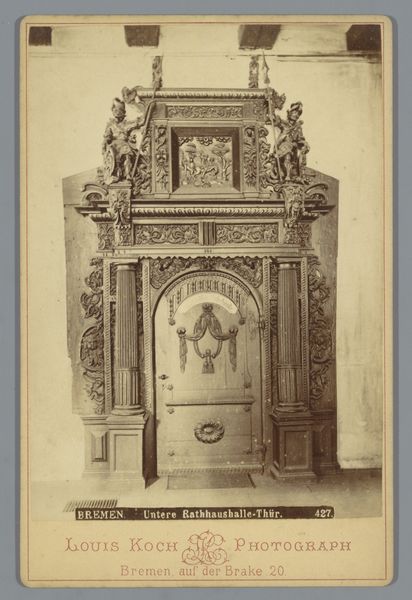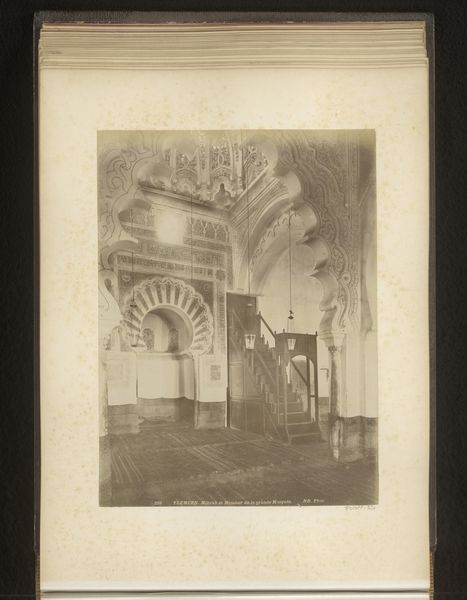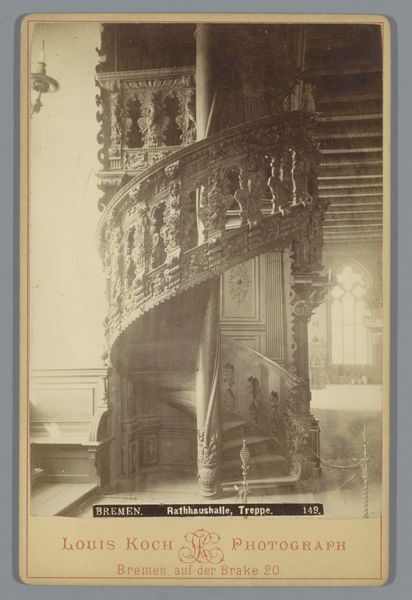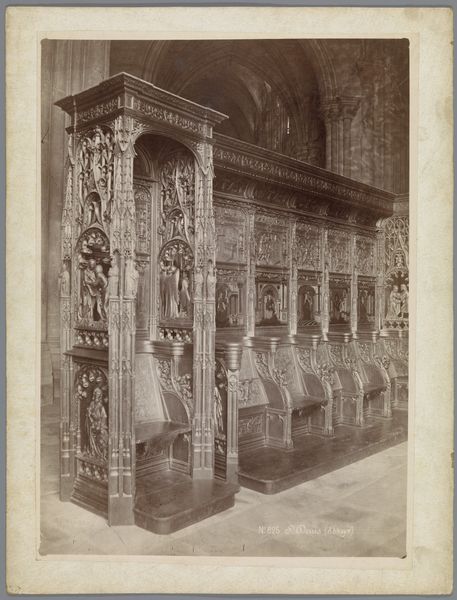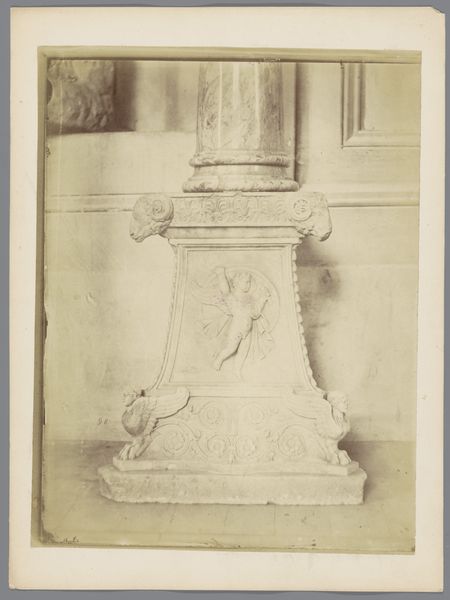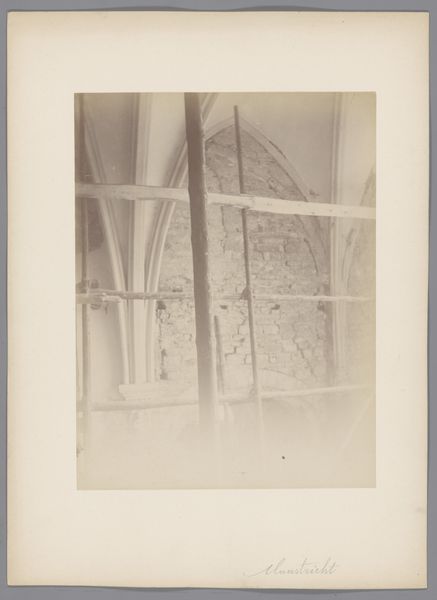
Interieur van het trappenhuis van Château Châteaudun c. 1875 - 1900
0:00
0:00
medericmieusement
Rijksmuseum
Dimensions: height 350 mm, width 250 mm
Copyright: Rijks Museum: Open Domain
Editor: This photograph, “Interieur van het trappenhuis van Château Châteaudun,” was taken by Médéric Mieusement sometime between 1875 and 1900. It depicts a winding staircase, and the texture of the stone is incredibly palpable. What draws your eye in this piece? Curator: As a materialist, I’m struck by the way Mieusement’s photography almost reverses the traditional hierarchy between architecture as high art and photography as a mere tool. The image foregrounds the sheer labor and materiality involved in constructing such an ornate staircase. We see the marks of the stonemasons, the cumulative effort etched into the very surfaces. What does that craftsmanship communicate to you? Editor: It emphasizes the human element of its creation, especially as photography itself was industrialized by this time. There's a real tension there. Curator: Precisely! Consider the social context: this château represents aristocratic power, built and maintained through immense resources and, historically, forced labor. Yet, the photograph subtly democratizes it by emphasizing the *process* of its making. Mieusement uses light and shadow to flatten the space, highlighting the raw materiality and the workers’ contribution rather than just the opulent end result. Editor: That’s a great point! I was initially caught up in the Romanticism of the ruin, but now I see how the photograph brings attention to the means of production. It’s about the work it took to make this stairwell. Curator: And also about the transformation of a space. Photography made it reproducible; anyone could experience a monument. This print’s material value then stems less from the photographic scene, and more from its portability and replicability. Ultimately, the image's accessibility invites consumption in a new way. Editor: I see how shifting the focus to materiality changes the way we look at this photograph. It's more than just a beautiful staircase, it’s a testament to the work and the changing perception of the monument in that era. Curator: Exactly. It’s a lens through which we can re-examine power, labor, and representation in the 19th century.
Comments
No comments
Be the first to comment and join the conversation on the ultimate creative platform.
